Crafting Radiolaria Sculptures – from microscopic life to art
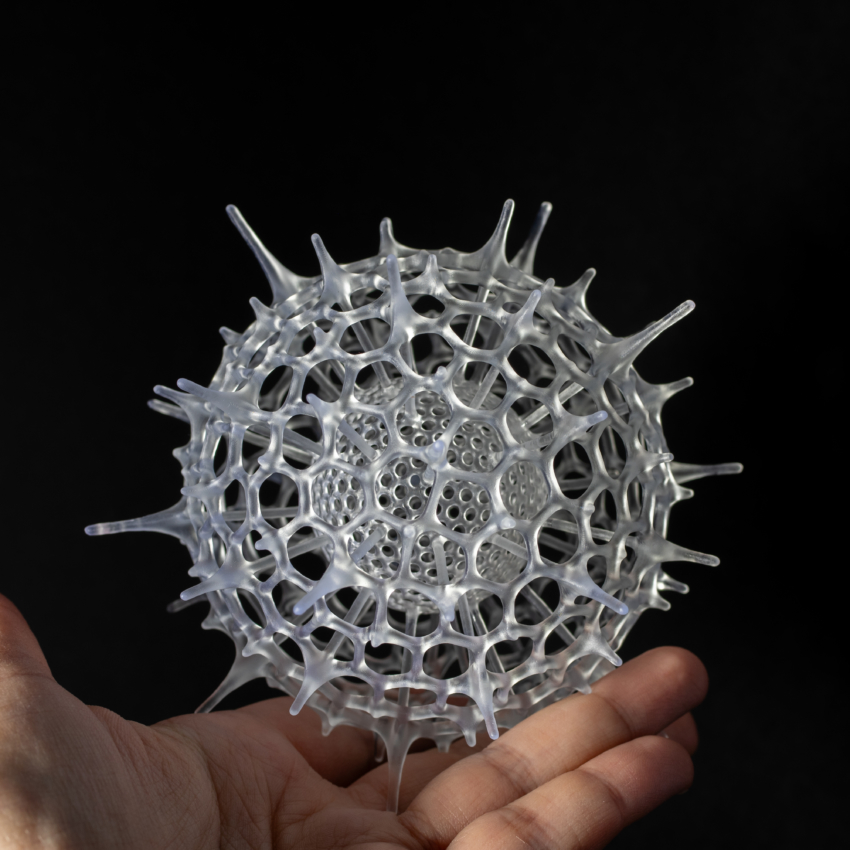

We’ve created a set of 4 limited edition Radiolarian sculptures that are now available in our shop. These limited edition sculptures are inspired by Radiolaria, microscopic unicellular sea creatures that create skeletons from silica. Their skeletons are among the most beautiful and complex natural microstructures, resembling elaborate filigree or latticework. Artists like us have long been fascinated by Radiolaria dating back to Ernst Haeckel’s drawings in the late 19th century. We studied his drawings alongside scanning electron microscope images to create a series Radiolaria-inspired sculptures exploring their diversity of form.
The video above goes over the process of creating the sculptures. We print these in clear resin at our studio on our Formlabs Form 3 printer. Each sculpture takes between 6 hours and 14 hours to print. Afterwards, we remove the supports, clean and cure each print. This is our first time offering sculptures for sale to the general public. Please allow 2 weeks for us to produce your sculpture.
If you would rather wear a Radiolarian then consider a piece of jewelry from our our Radiozoa collection. Algorithmically generated and cast in sterling silver or brass from 3D-printed wax, these pieces transform nature’s complexity into striking, wearable designs.
What are Radiolaria?

Radiolarians are microscopic organisms that build intricate, geometric skeletons out of silica, essentially glass! They have inspired a lot of artists (including ourselves) mostly through drawings made by Ernst Haeckel. He was a 19th century naturalist who made many spectacular illustrations of microscopic life cataloged in his books Art Forms in Nature and Die Radiolarien. Here are a few that inspired the sculptures we created. All of his works are now in the public domain and can be found at the Biodiversity Heritage library and Internet Archive.
Radiolarians are abundant today in the Earth’s oceans but are also ancient dating back to the early Cambrian period. Their silica skeletons are well preserved in the fossil record making them an important source of information in geology for dating rocks. Radiolaria range from 30 microns in size to up to 2mm. They primarily live as plankton freely floating in the ocean. Their intricate skeletons serve as protection, help in capturing prey, provide structural support and improve buoyancy.
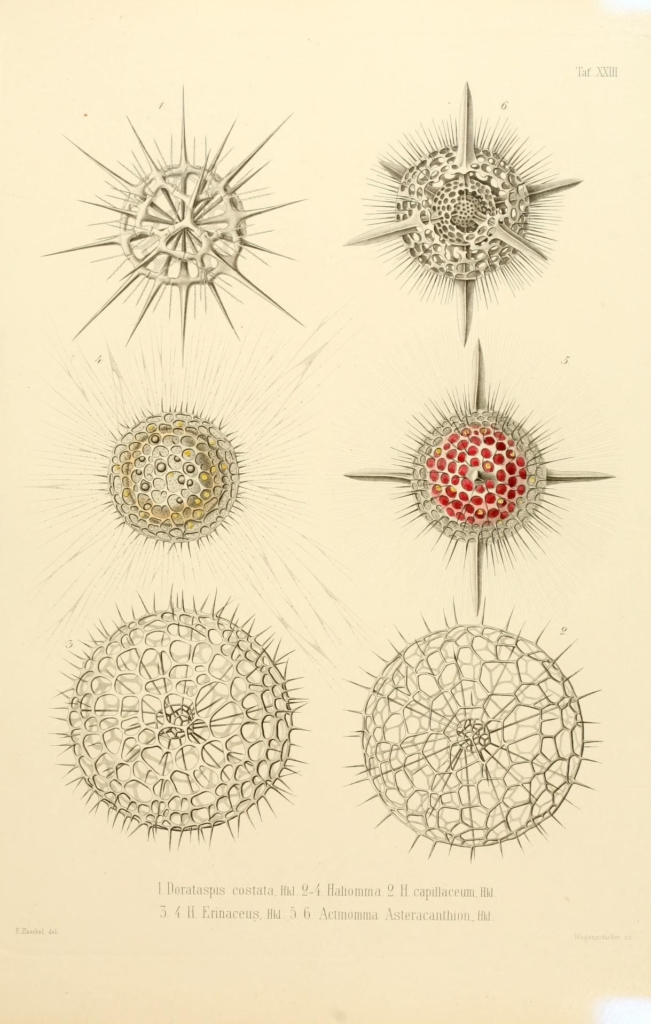
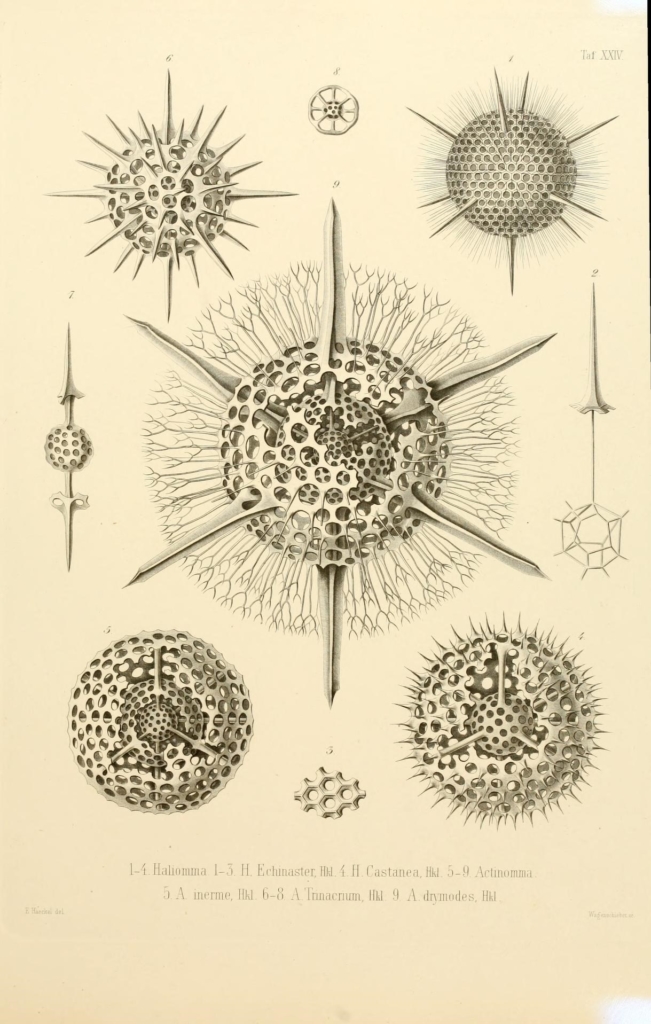

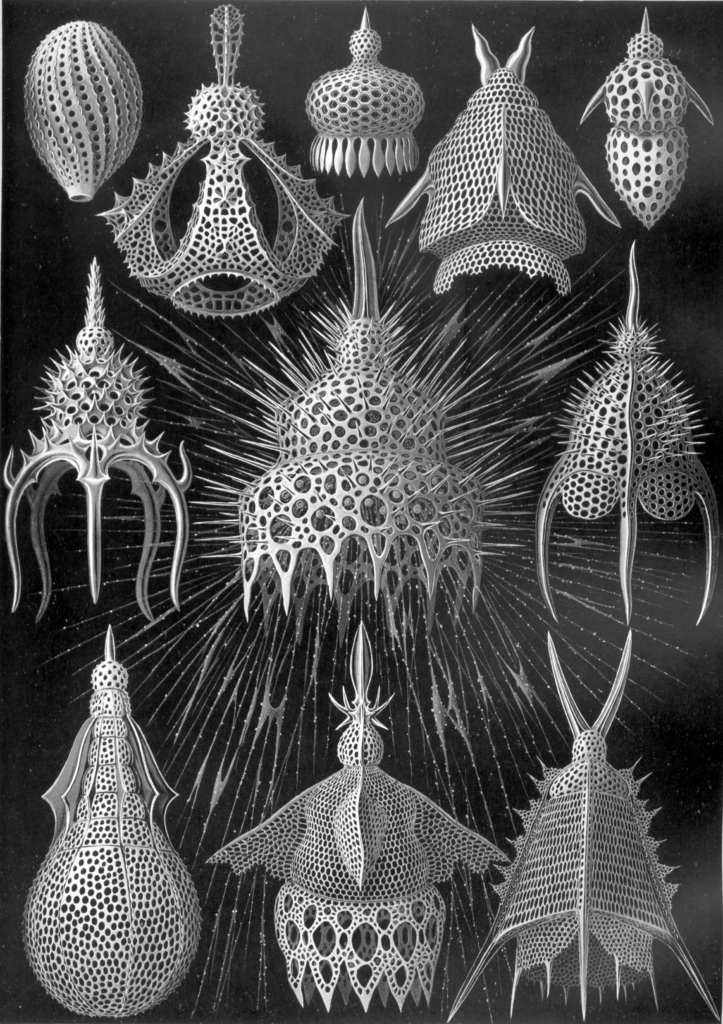

ORIGINS + Patreon
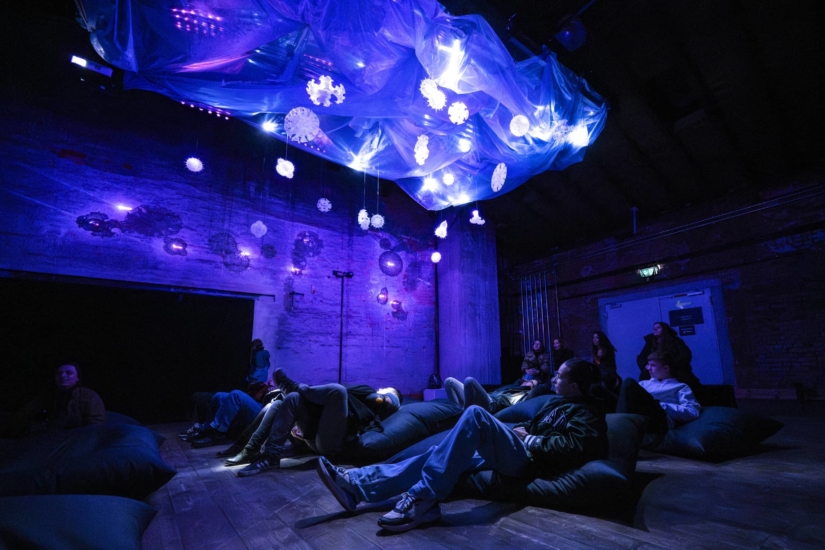
This project began when Paolo Löffler, a curator at Kunstkraftwerk Leipzig, invited us to create a series of radiolaria-inspired 3D printed sculptures for their immersive exhibition ORIGINS, which explores the emergence of life. We have looked to radiolarians before, starting with our Radiolaria jewelry collection from 2007, but this commission called for a more literal interpretation. As we adapted our existing algorithms and software tools to generate Radiolaria forms, we prototyped everything in house on our Form 3 printer. The early results were so exciting that we produced a set of forty one of a kind radiolarian sculptures for our Patreon community while developing the software that eventually powered the larger, more complex models for the exhibition.
Since sharing these pieces, many people have asked if we would ever make them available to the public. For the holidays, we decided to try a small experiment and release a limited set of four sculptures.
Technical Details
To design our Radiolaria, we create cellular patterns on surfaces using centroidal Voronoi cells. We do this using Bruno Levy’s Geogram library. While we’ve extended this method to make highly controlled anisotropic patterns in the past, radiolarians tend to be so regular that we can really just use regular Voronoi cells out of the box. What really gives the radiolarians their radiolarian feel is their shapes and their spikes. Radiolarians come in a lot of different shapes, though they tend to be rotationally symmetric. The simplest is a sphere, so that’s what we started with. To make the spikes, we add a line coming out of each vertex of the cellular pattern. If you just have random lengths, it doesn’t look very organic. Our first approach was to randomize the spike lengths using a power law distribution. Why a power law? Power laws are very common in nature, so it gives it an organic feeling even though it’s totally random. Later we switched to a blue noise approach. In this method, we start with one vertex and then successively find the furthest vertex, scale down the spike length, and then add a new spike there.
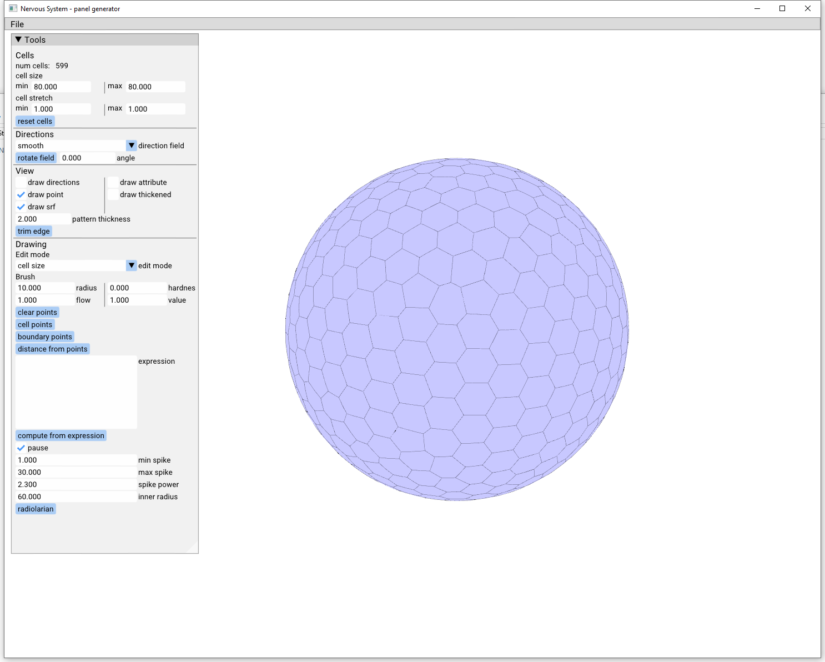
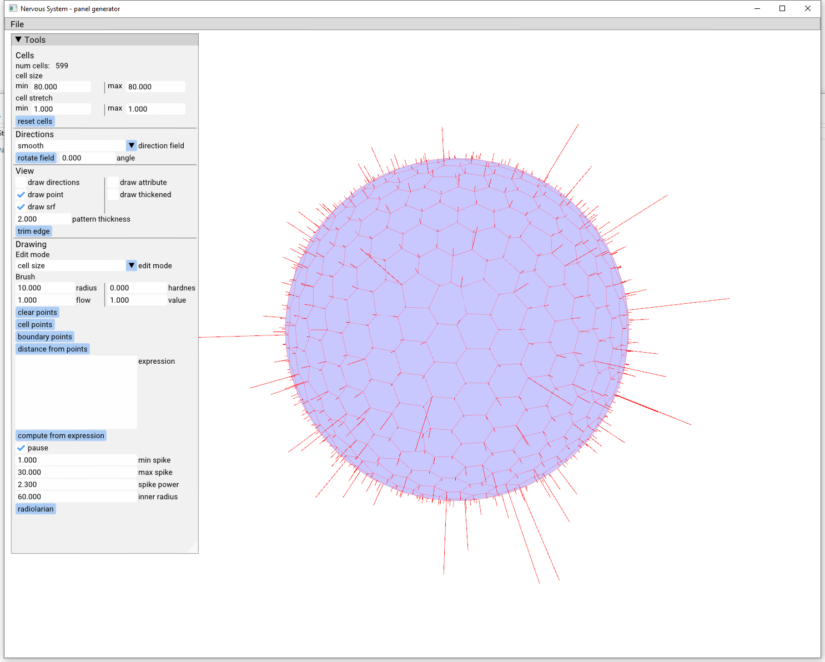
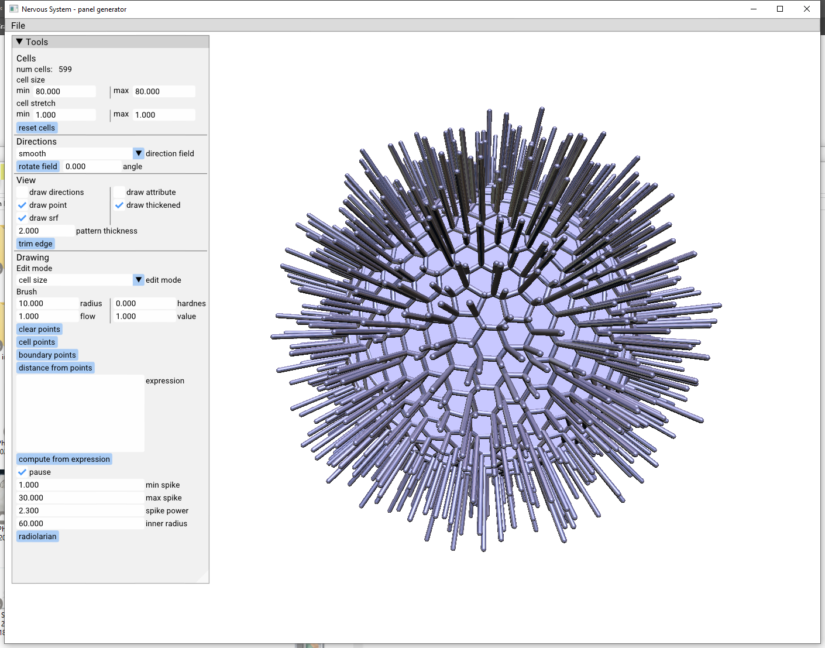
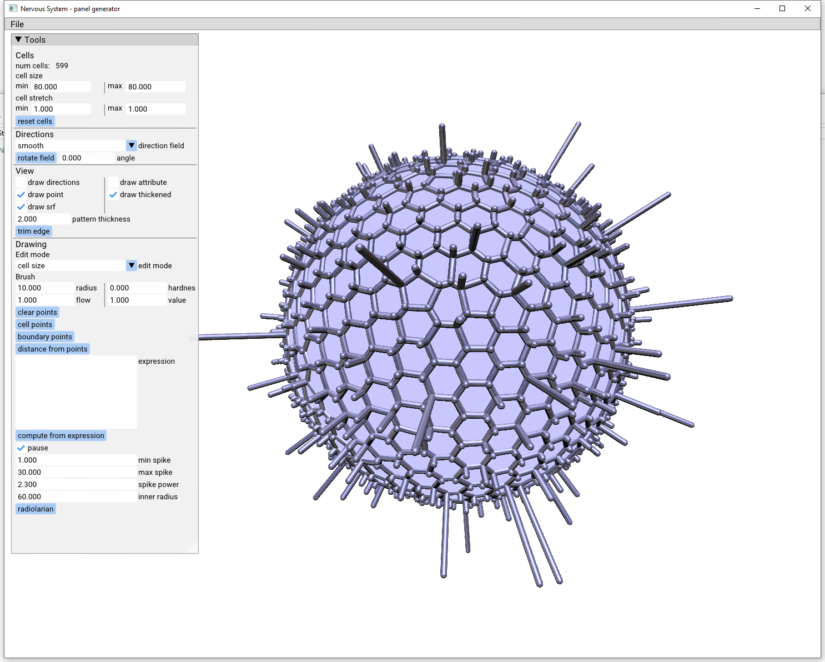
Then to make it into a 3D printable object, we use OpenVDB to thicken our pattern lines. We’ve added a LevelSetCapsule class to the library to allow us to make structures out of lines very similar to LevelSetSphere which is used to make shapes out of particles. The resulting mesh is then smoothed using Laplacian smoothing.
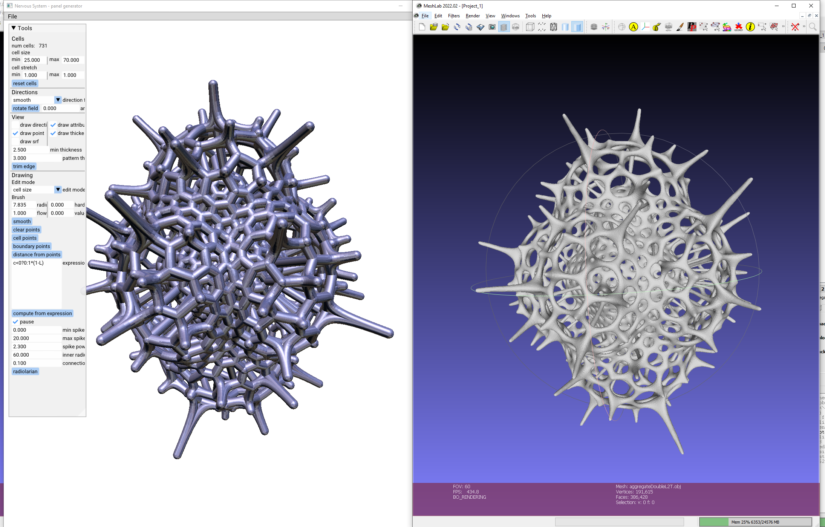
Radiolaria observed in nature often have concentrically nested shells. To create a multilayer structure, we essentially do the same thing with a smaller sphere and a larger sphere. The smaller, interior sphere is more detailed and connects to the spiky outer sphere with regularly spaced nodal connections.
Ultimately we added other variable macro-shapes to our radiolarian generator and developed ways to further articulate the cellular structure. For the ORIGINS exhibit, we also made other families of forms, based on our Porifera and Floraform projects.
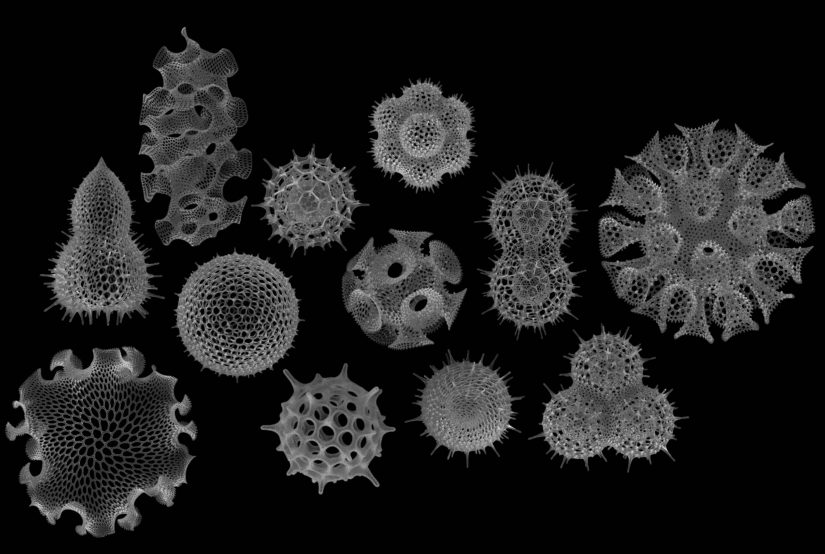
3D printing
The pieces for Kunstkraftwerk were too large to print on our Form 3, and they were needed in Germany. Although these 3D prints are fairly sturdy, shipping them overseas would have been risky and expensive. Fortunately, the Formlabs team in Berlin stepped in to help. Their office had a Form 4L printer, which produced all of the sculptures on site. We designed the supports for each model in PreForm, and Shiden Yohannes from Formlabs managed the printing in Berlin.
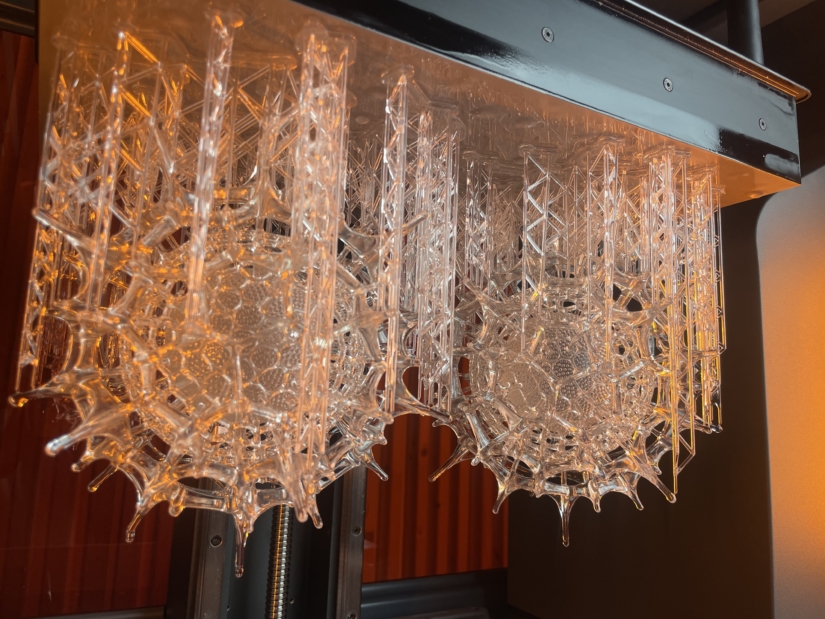
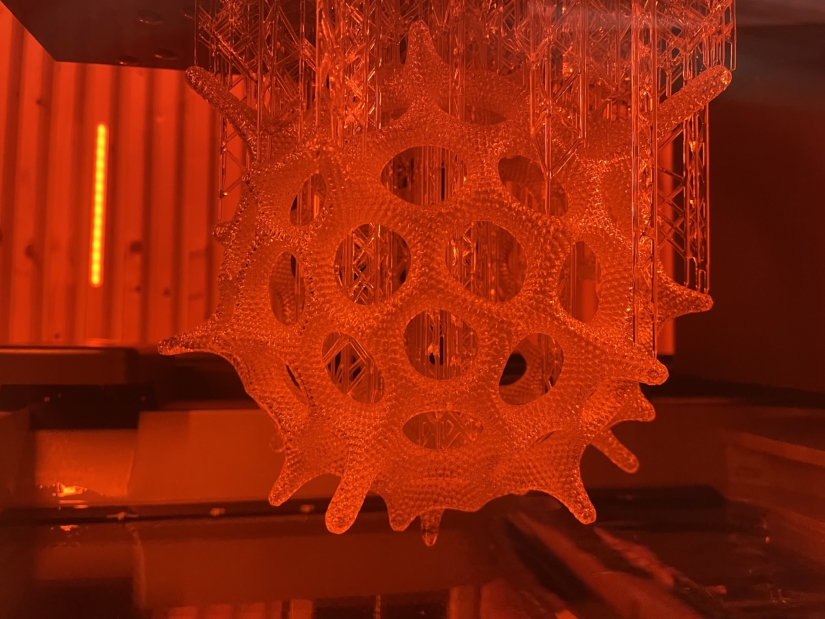
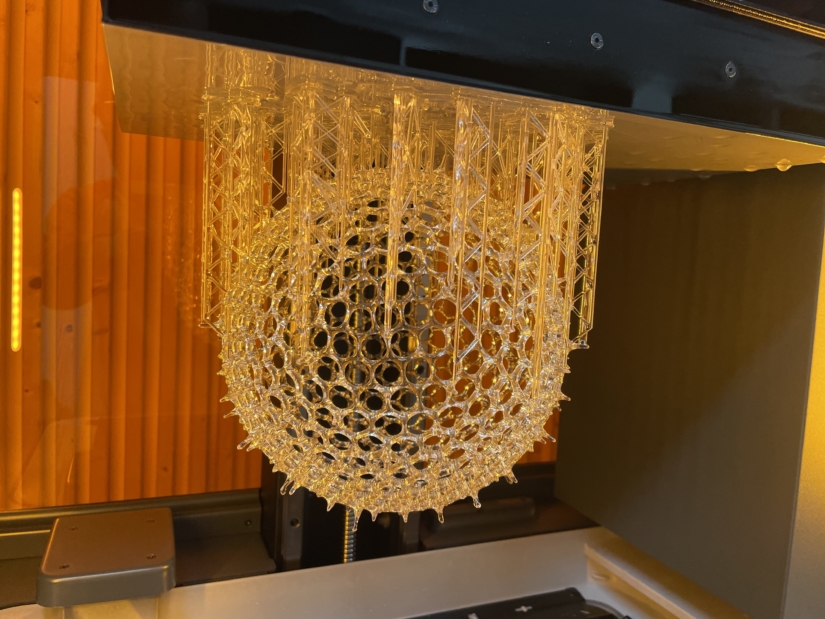
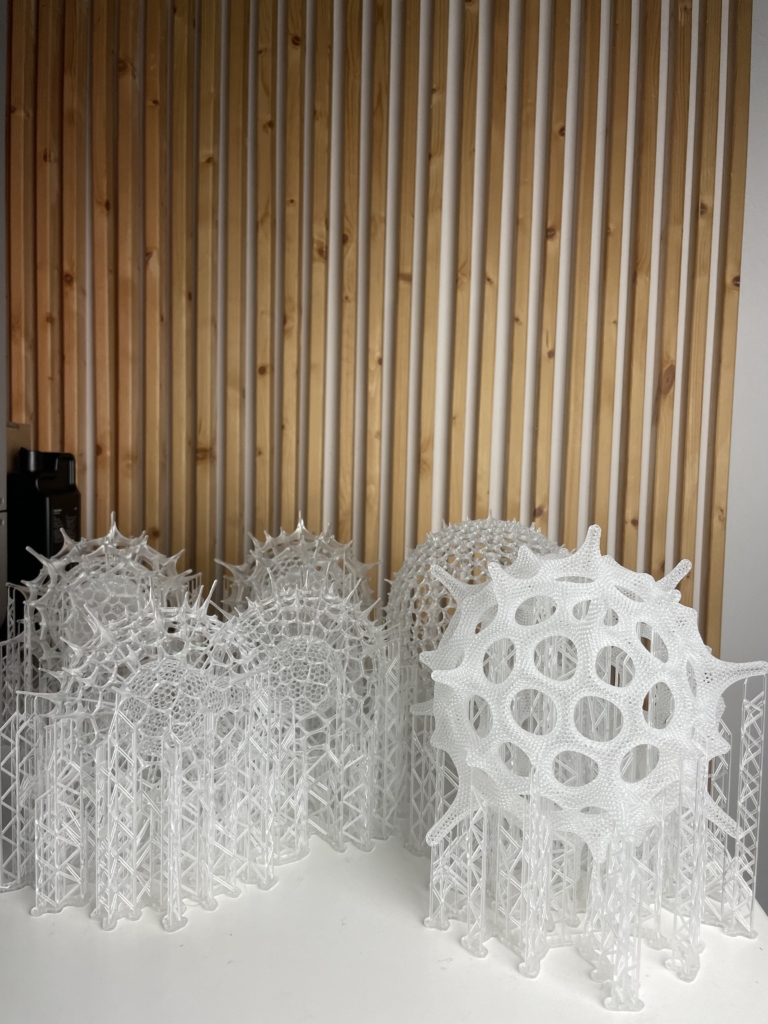

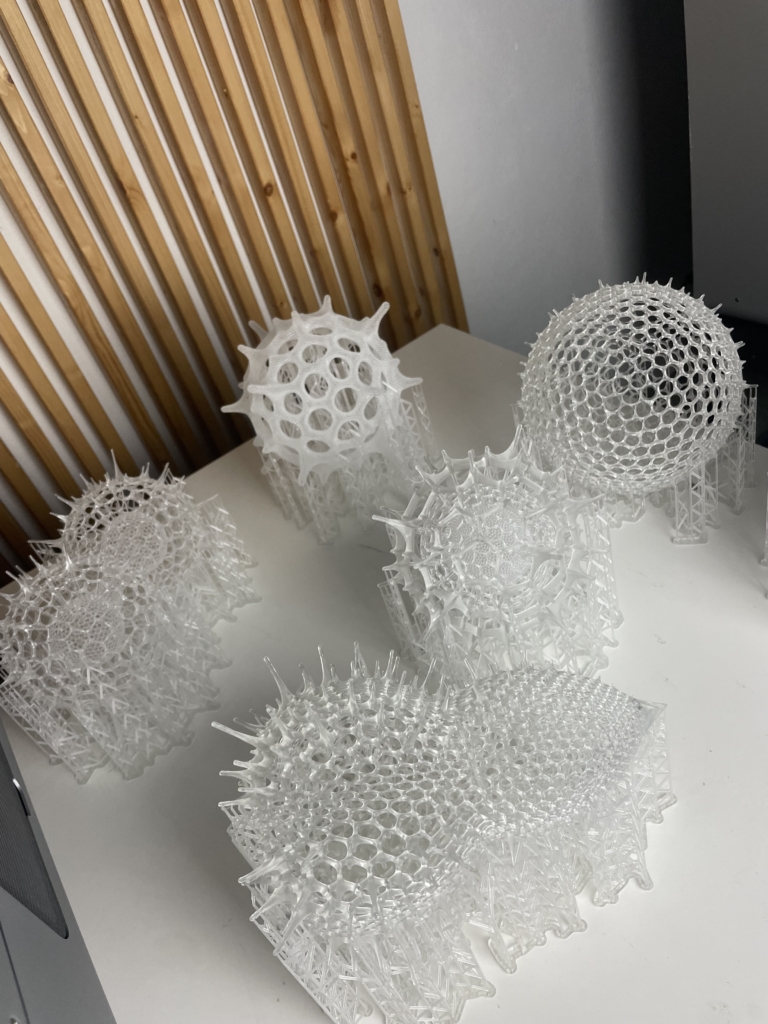
The sculptures for sale in our shop are printed here in the Catskills using our trusty Formlabs Form 3 3d-printer. This printer works by using UV light to cure liquid resin. The print emerges from the resin bath and ends up suspended from the build plate by the supports. Here’s an example showing what the support structures for these prints look like. We often get questions about how we remove the supports. It’s actually quite simple most of time. Watch the video below to see how Jesse pops one of our radiolarians off the supports.


The ORIGINS immersive exhibition is currently open in Berlin. Radioaria inspired sculptures and jewelry can be purchased in the Nervous System Shop.



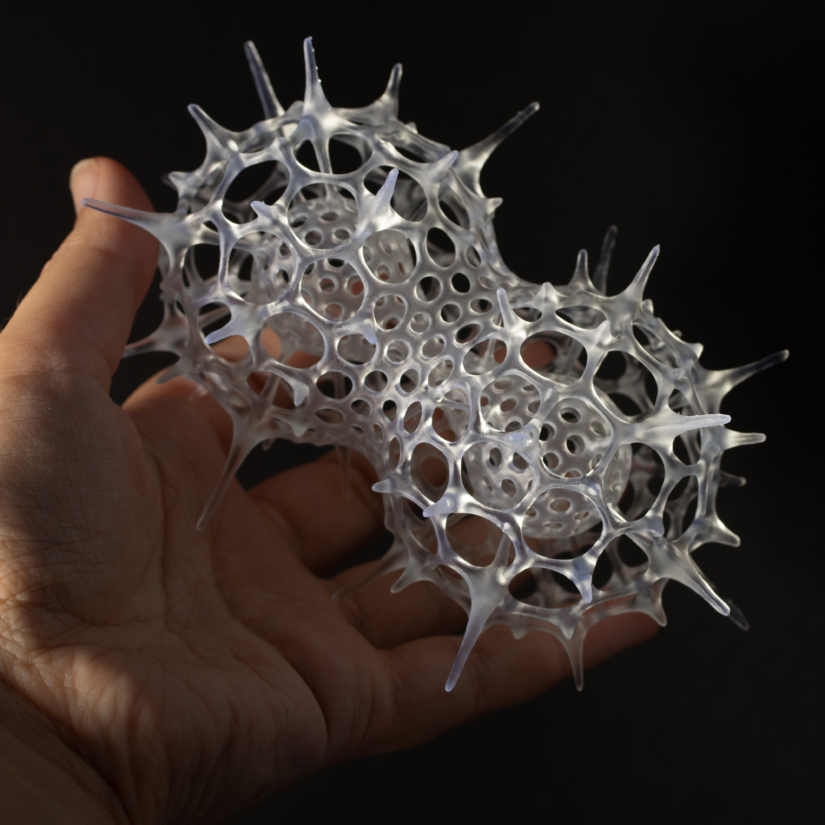
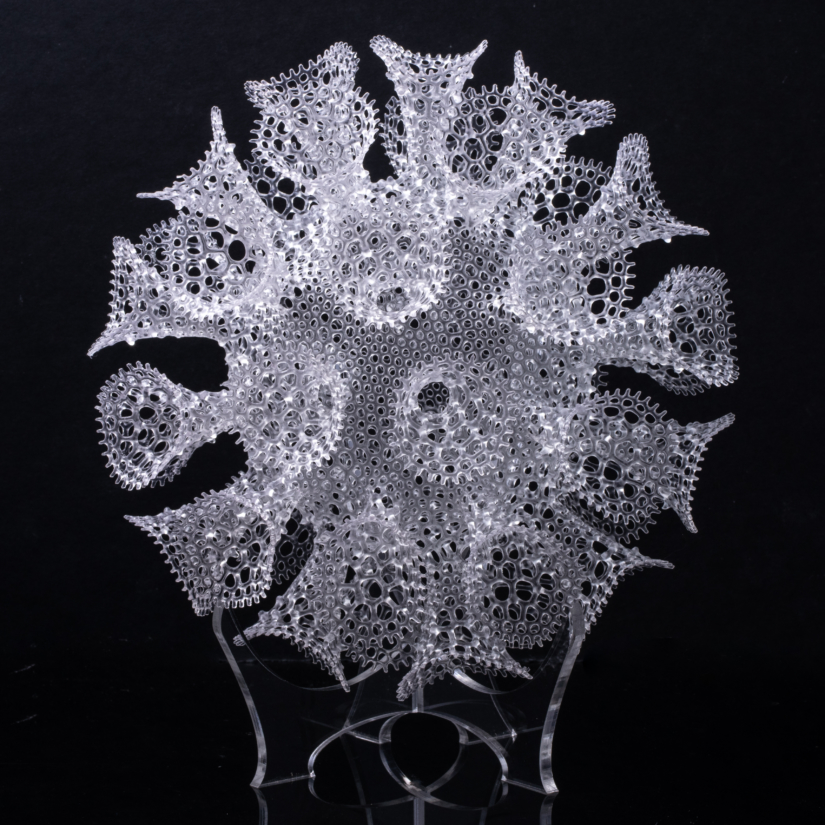
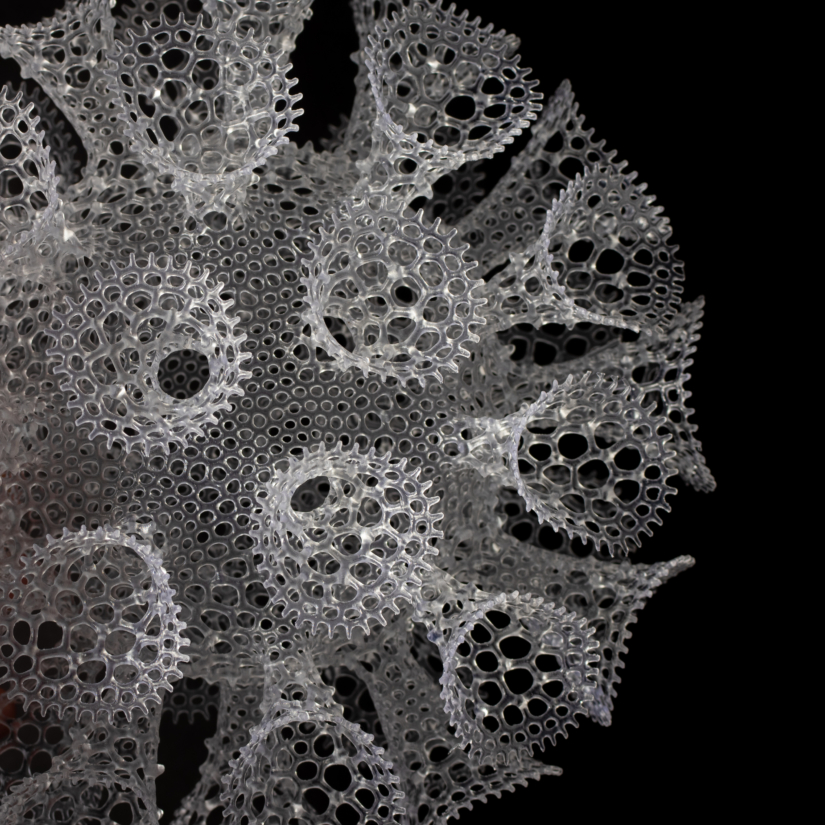






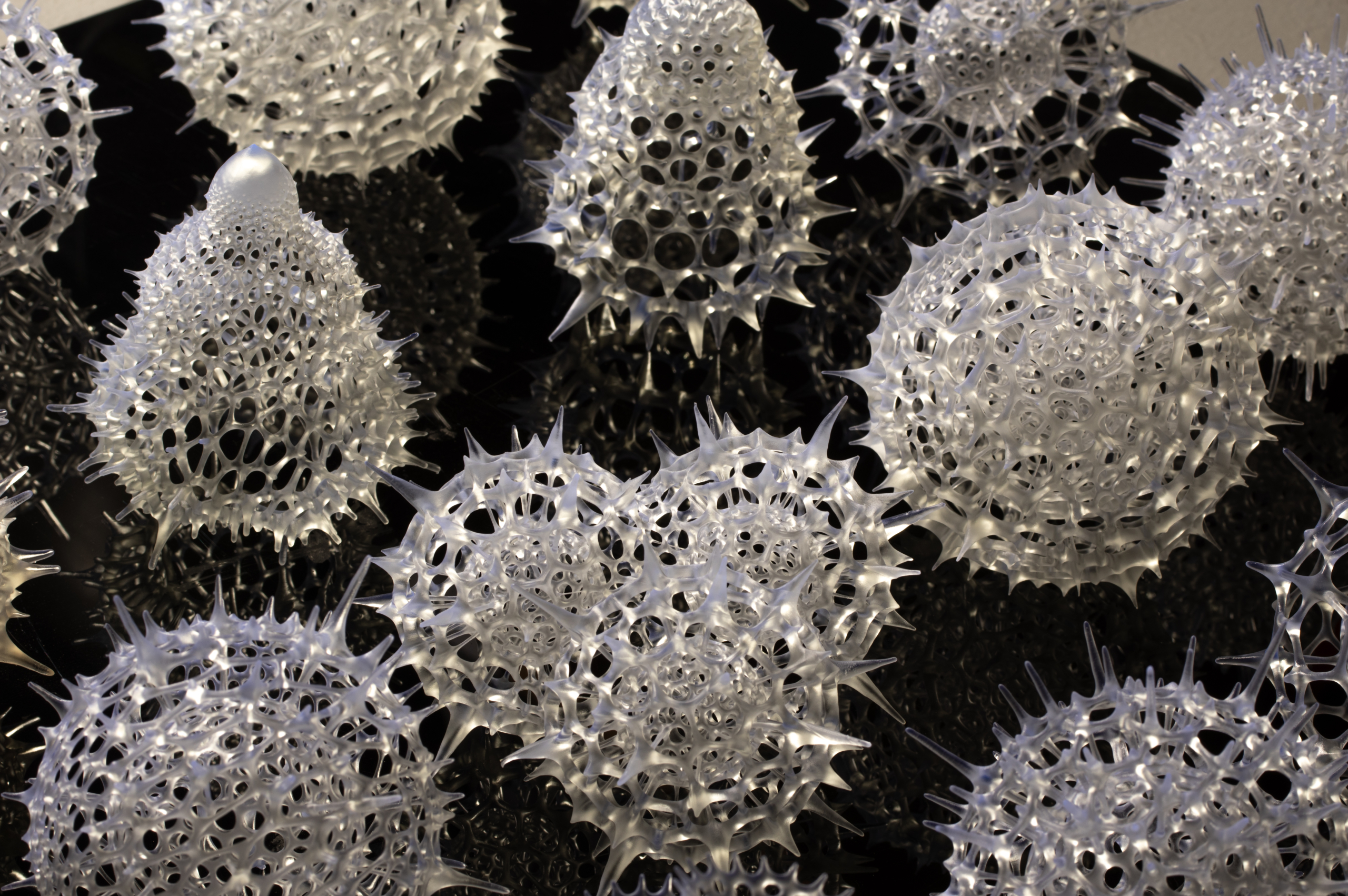
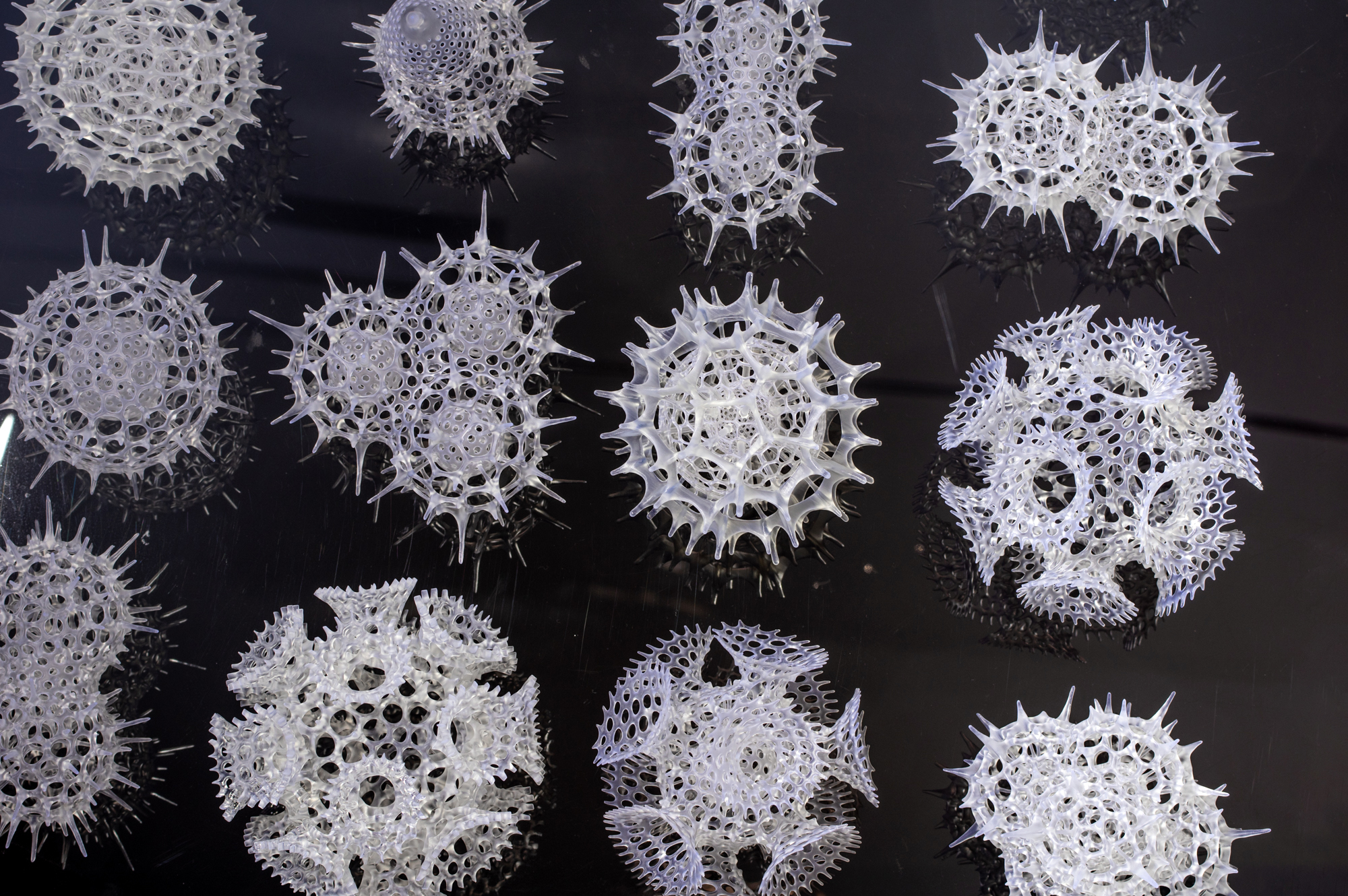
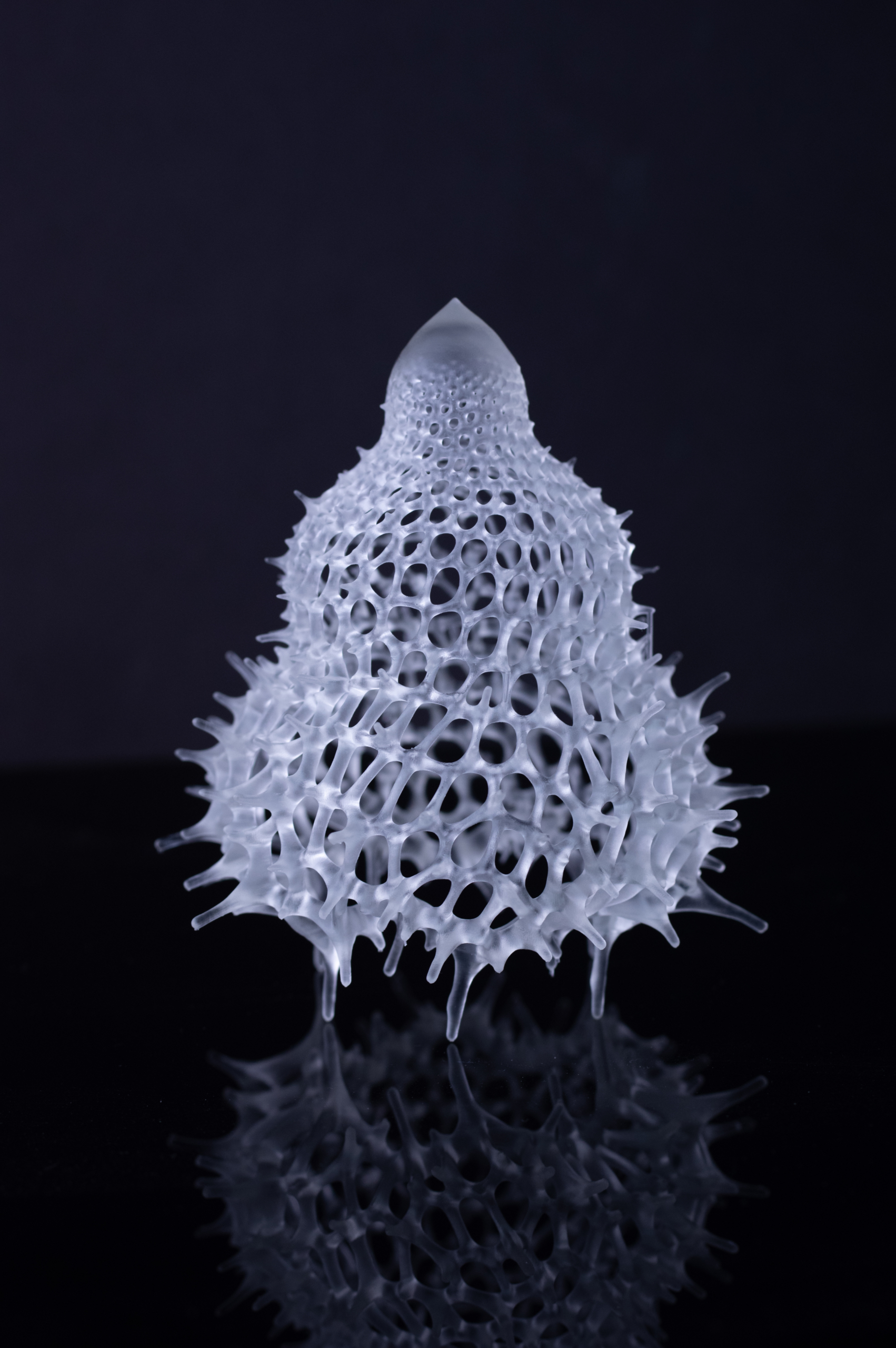
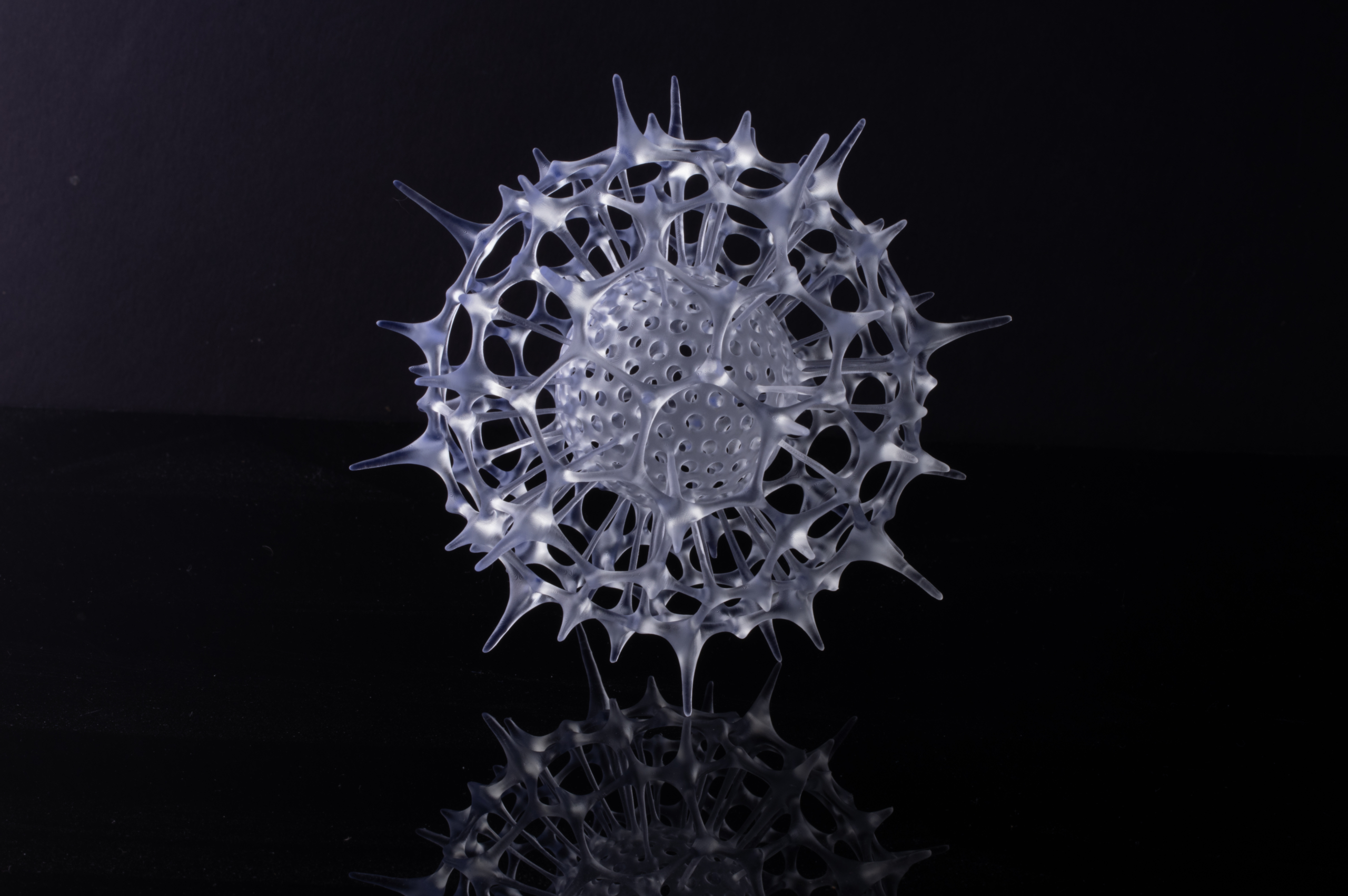
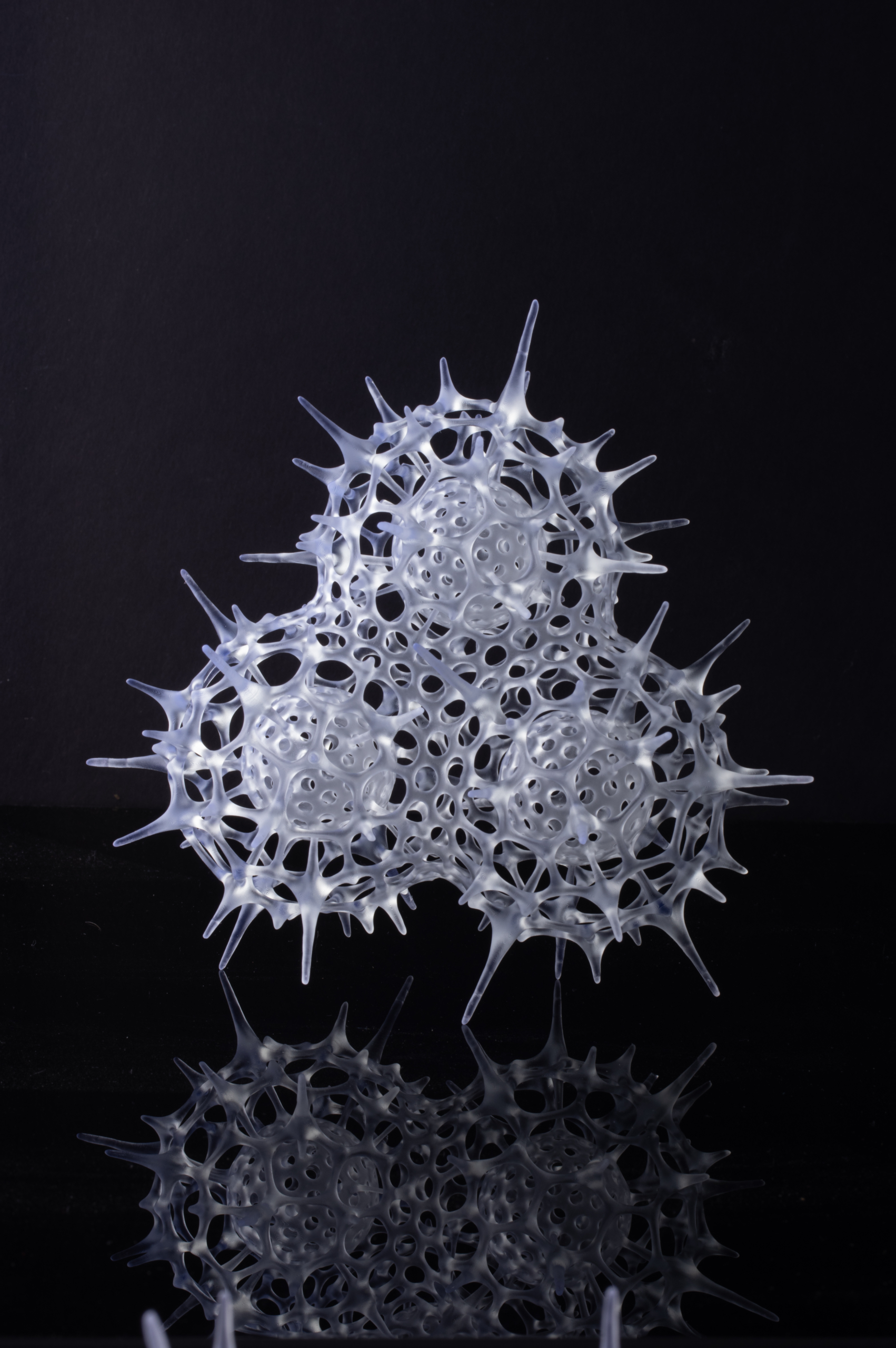

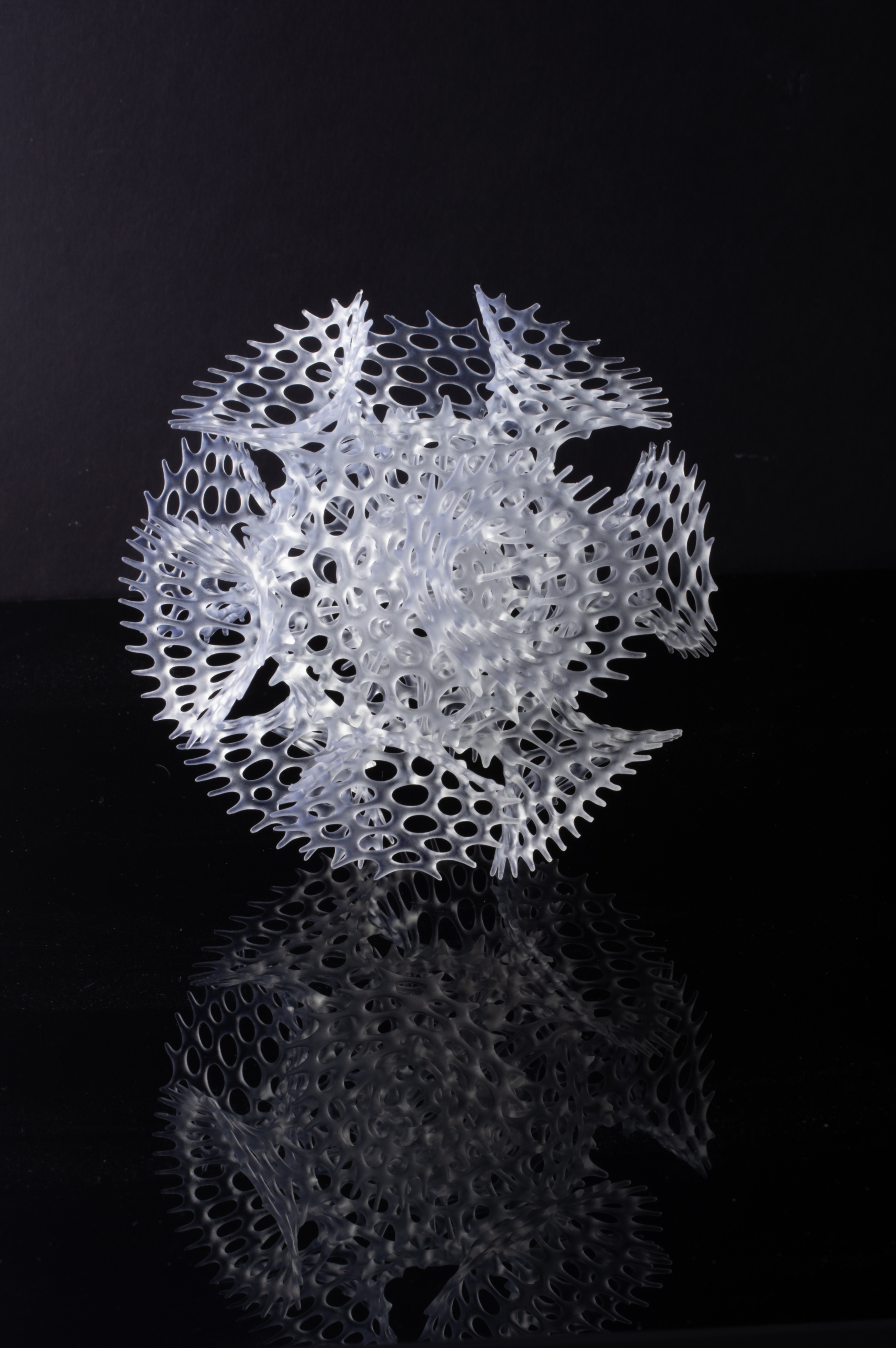
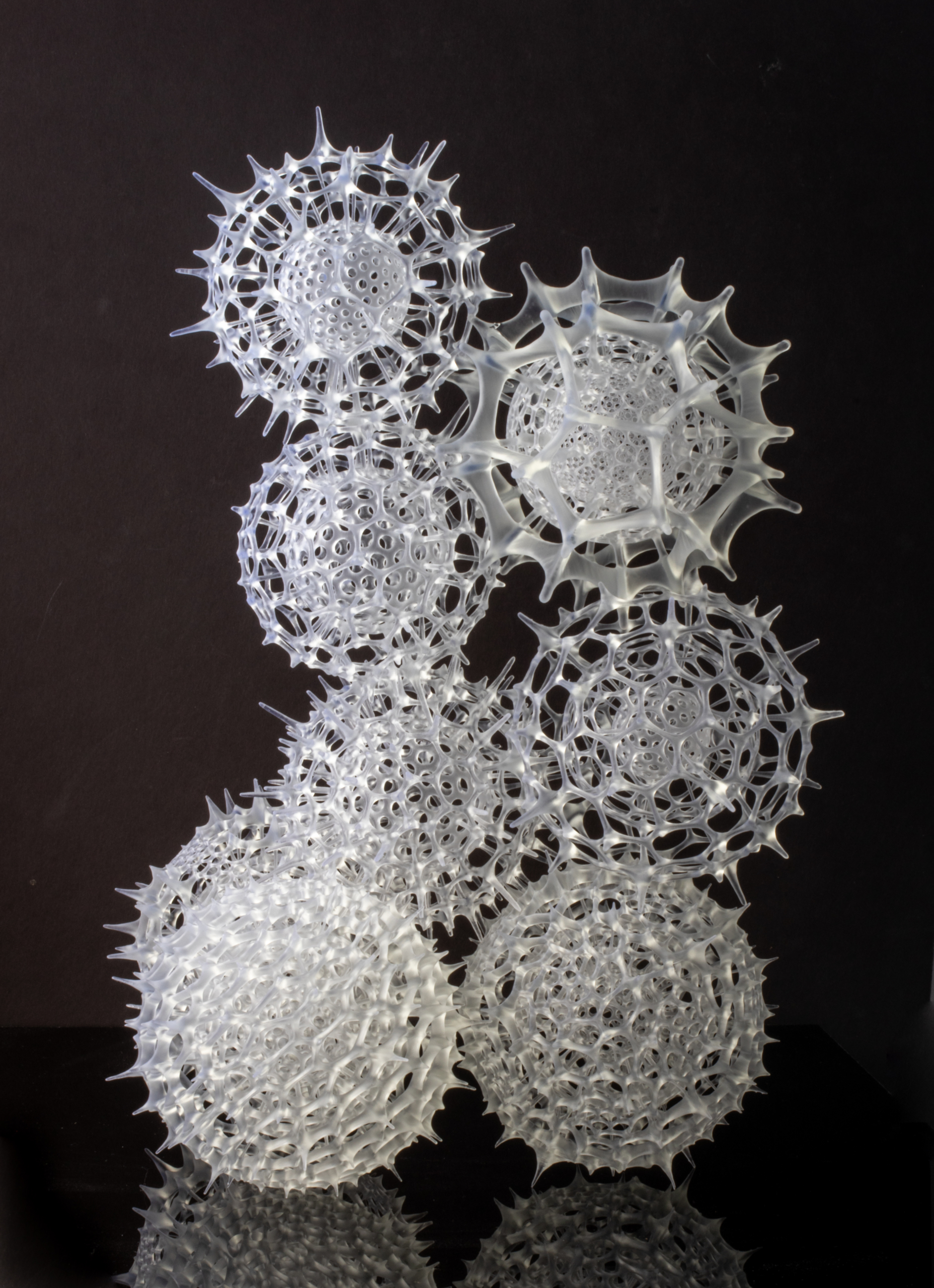
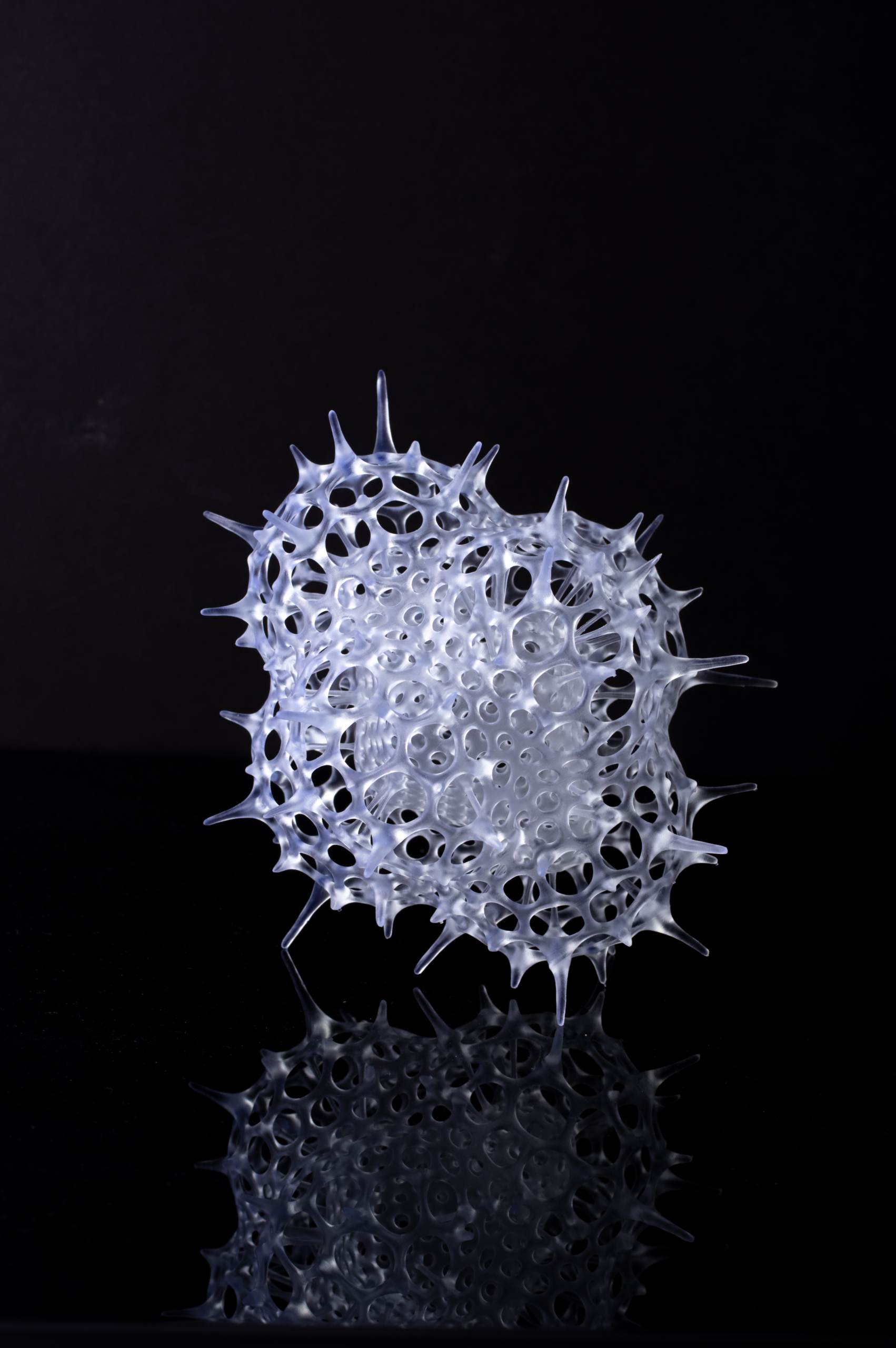
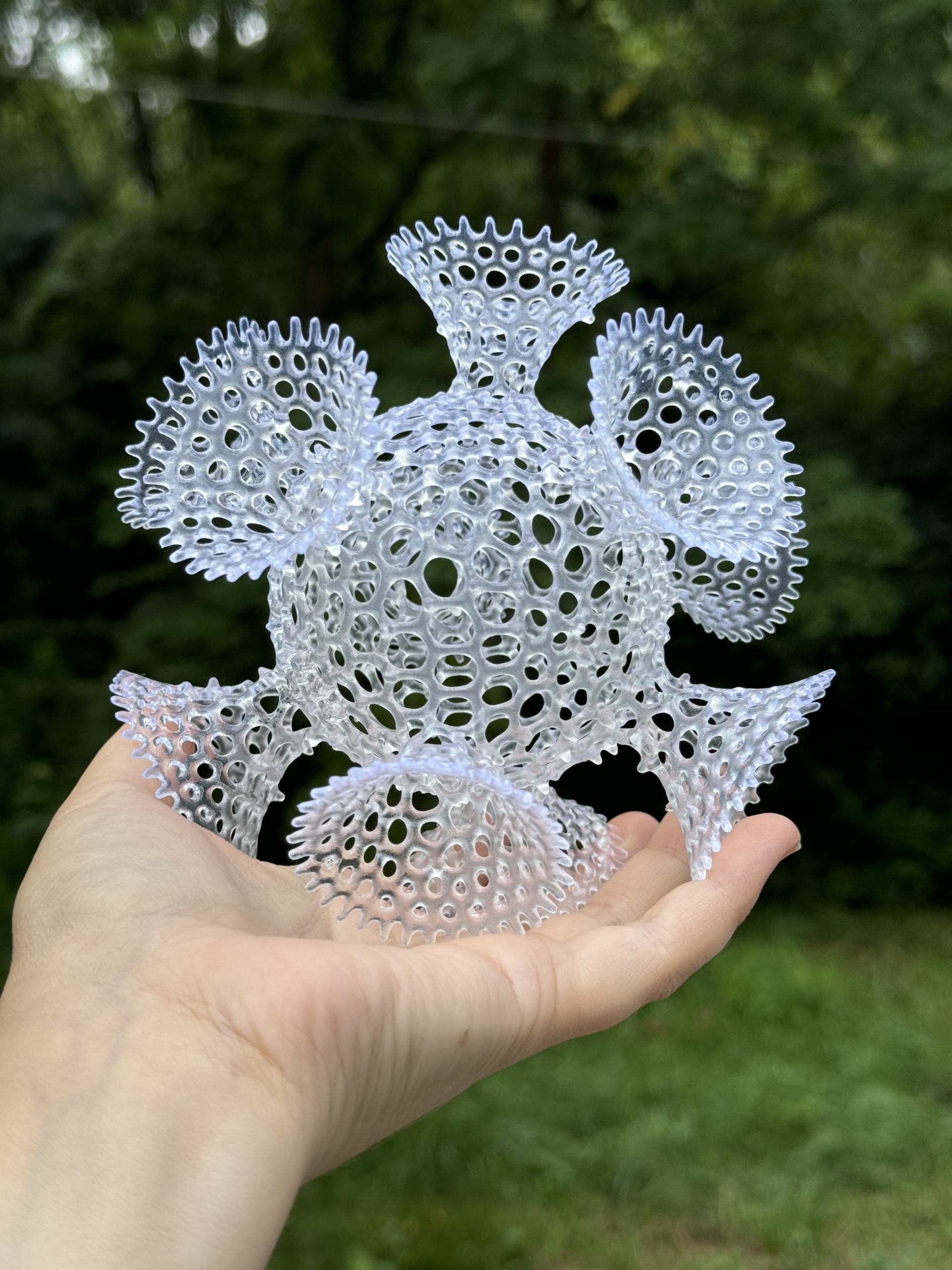

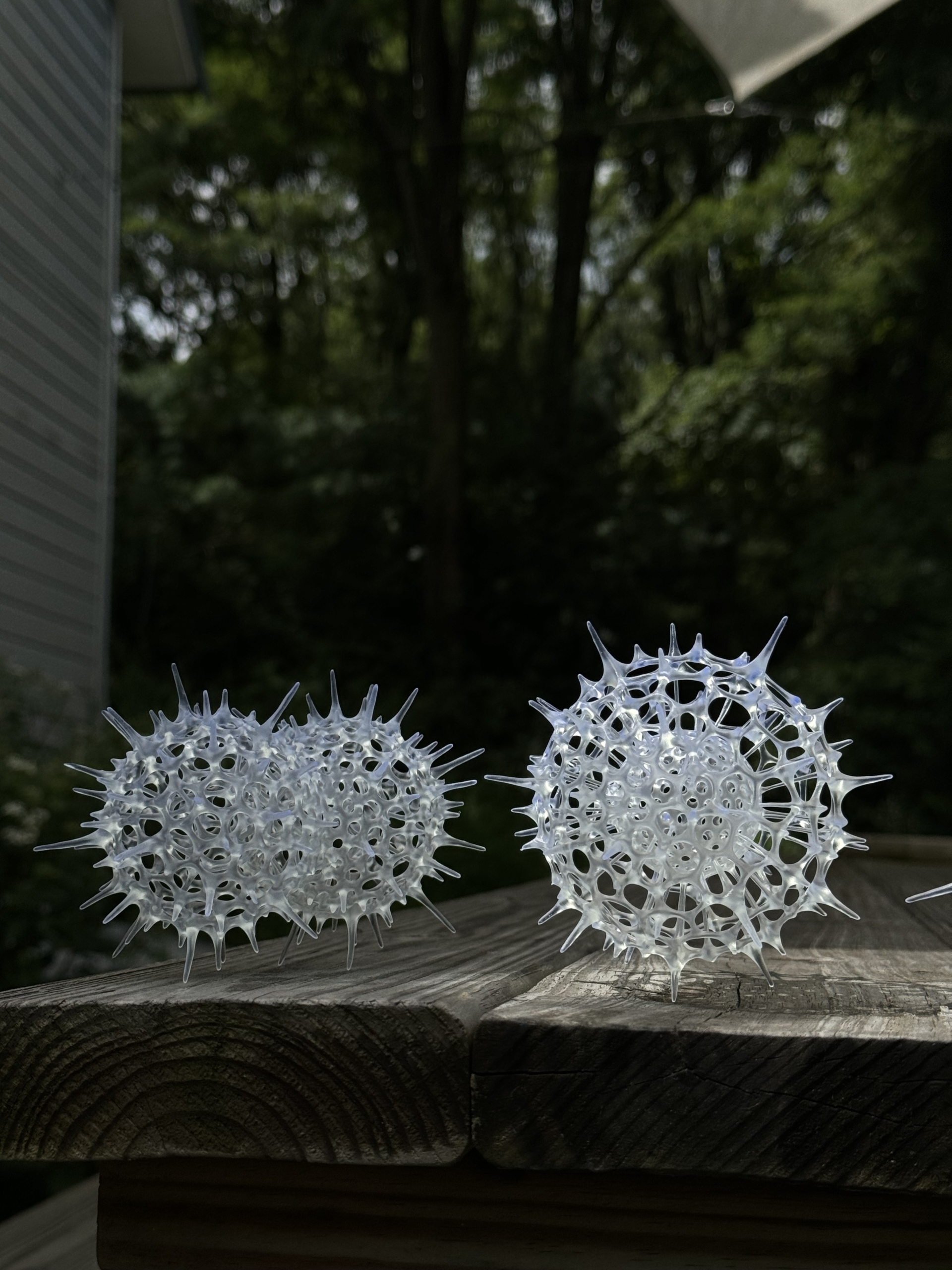
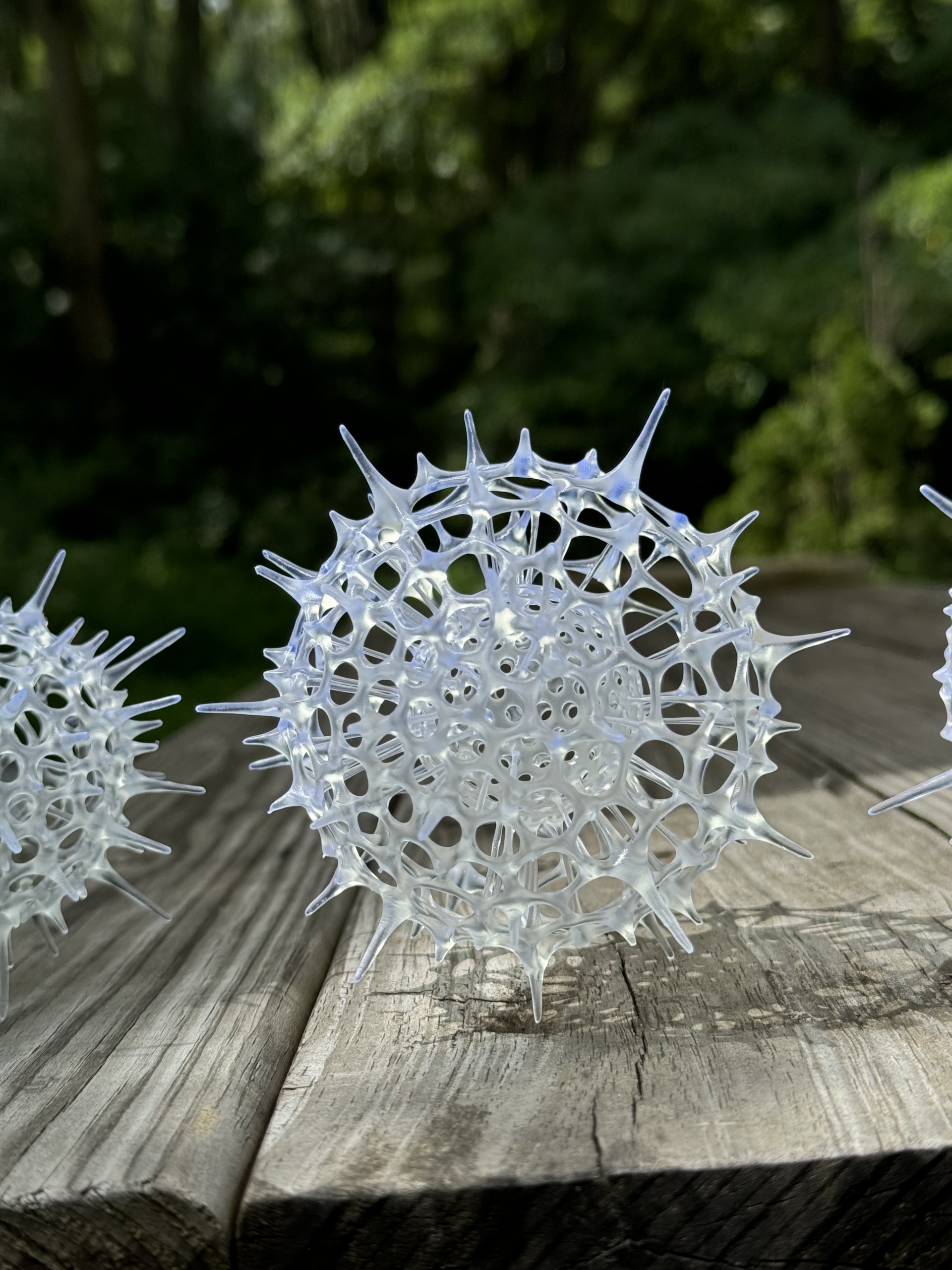
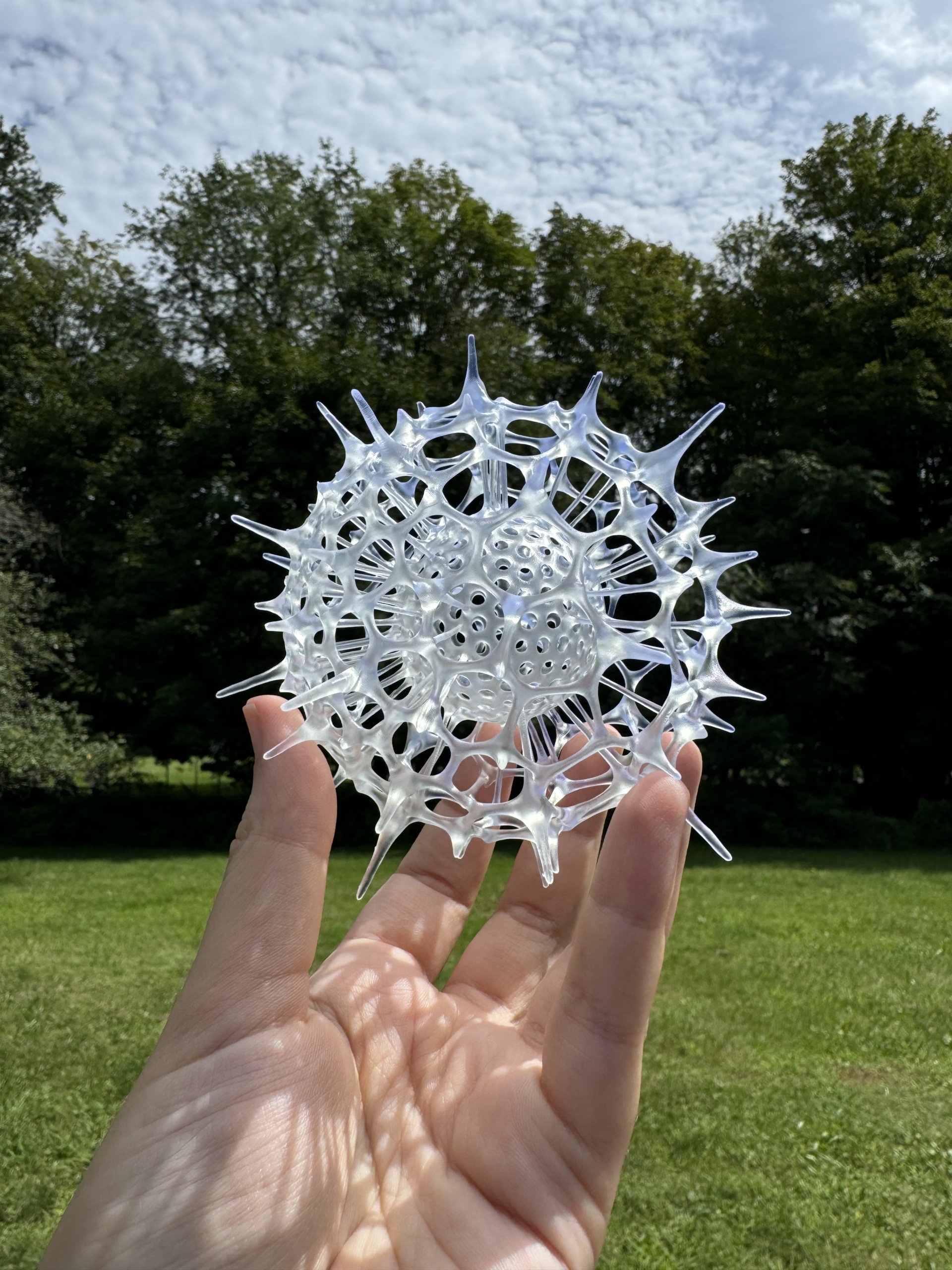
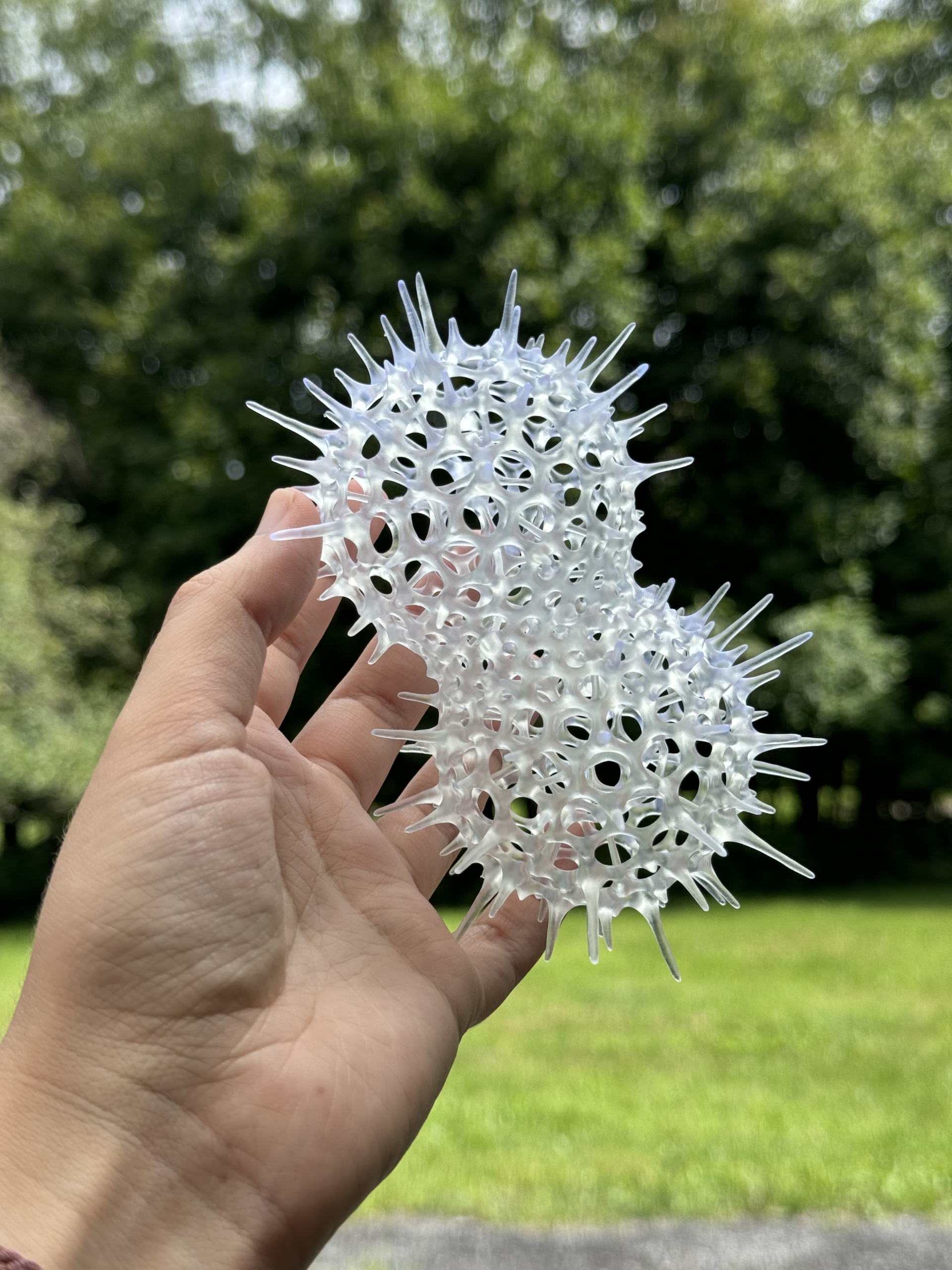
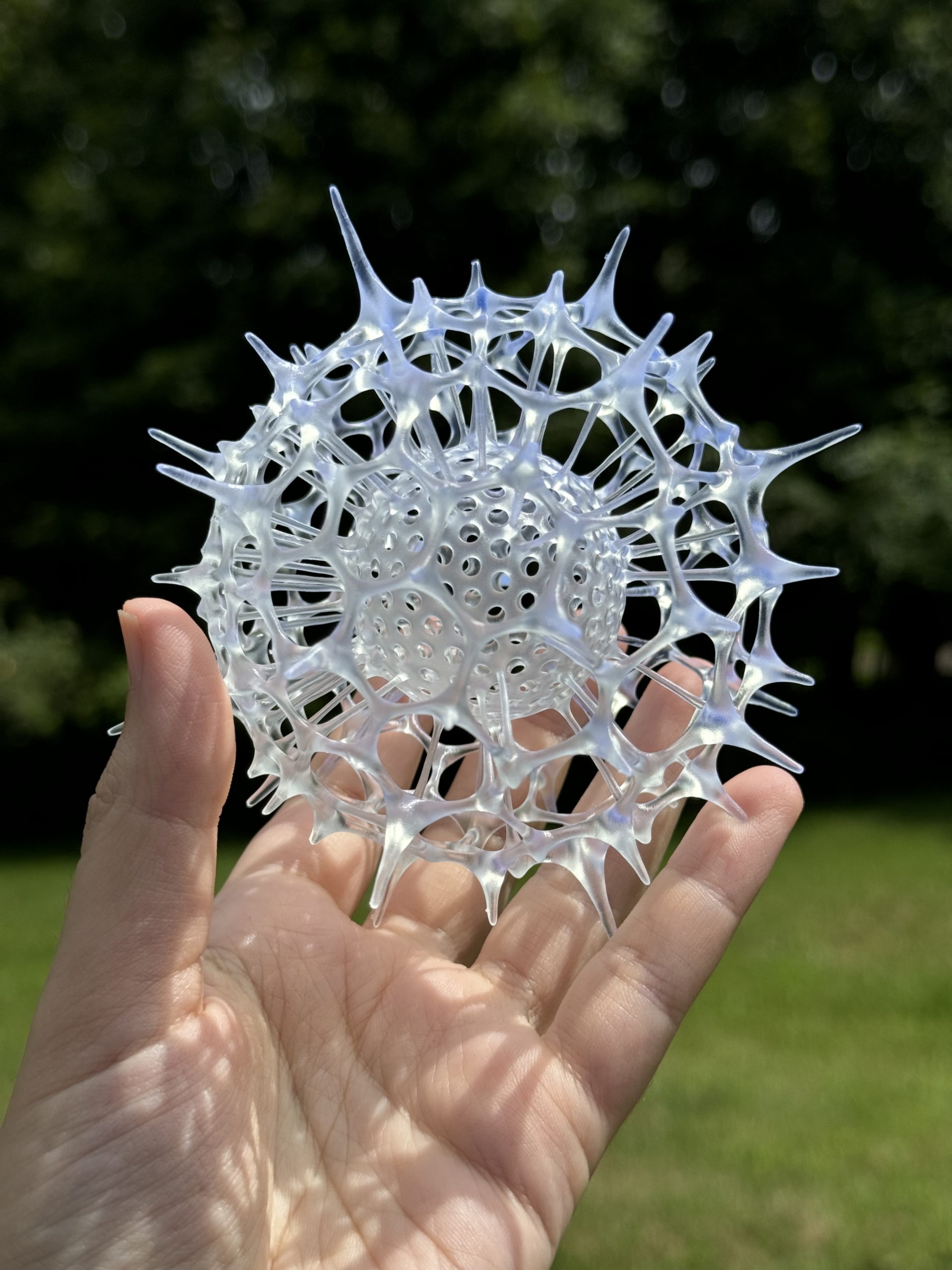
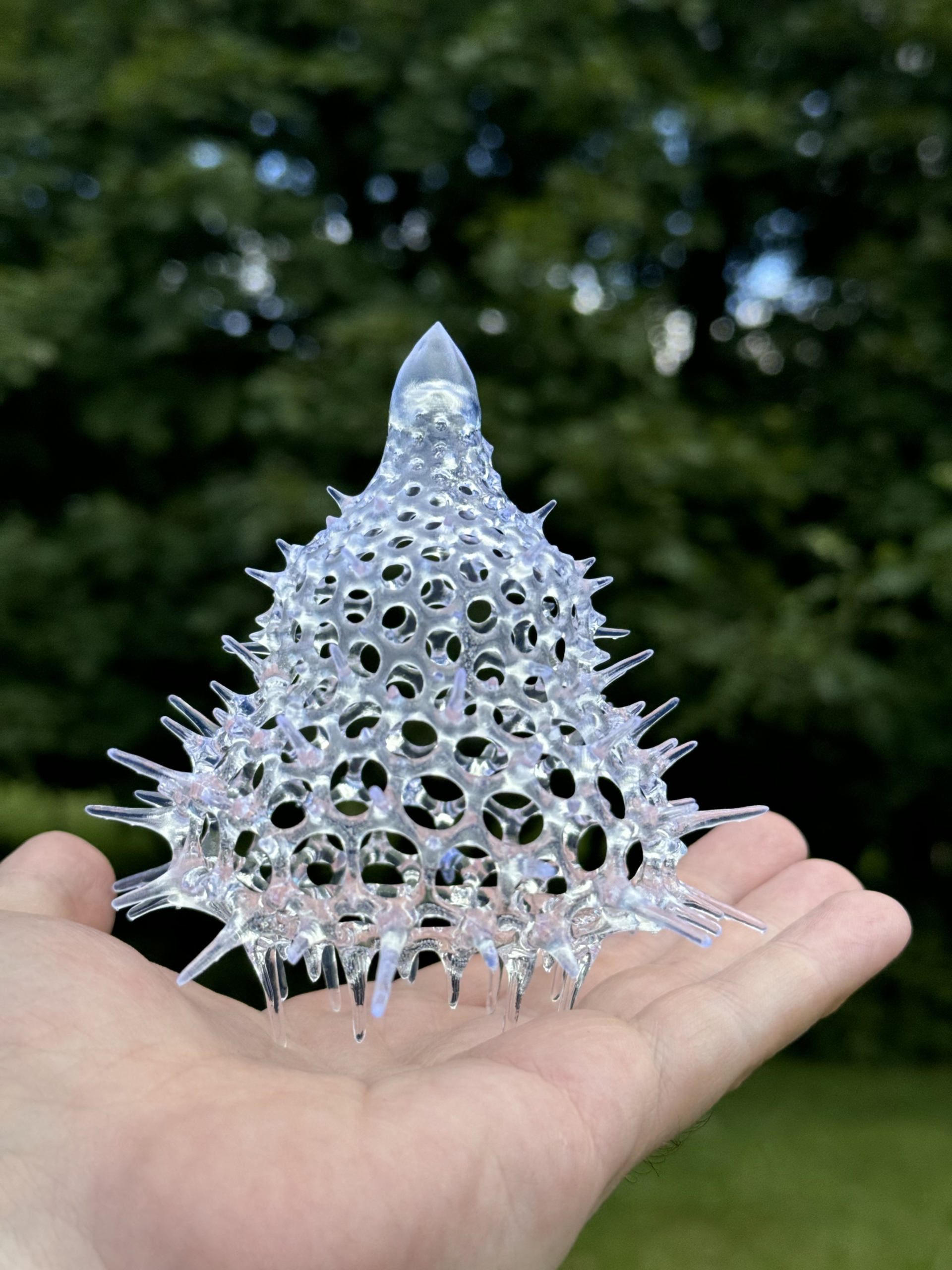
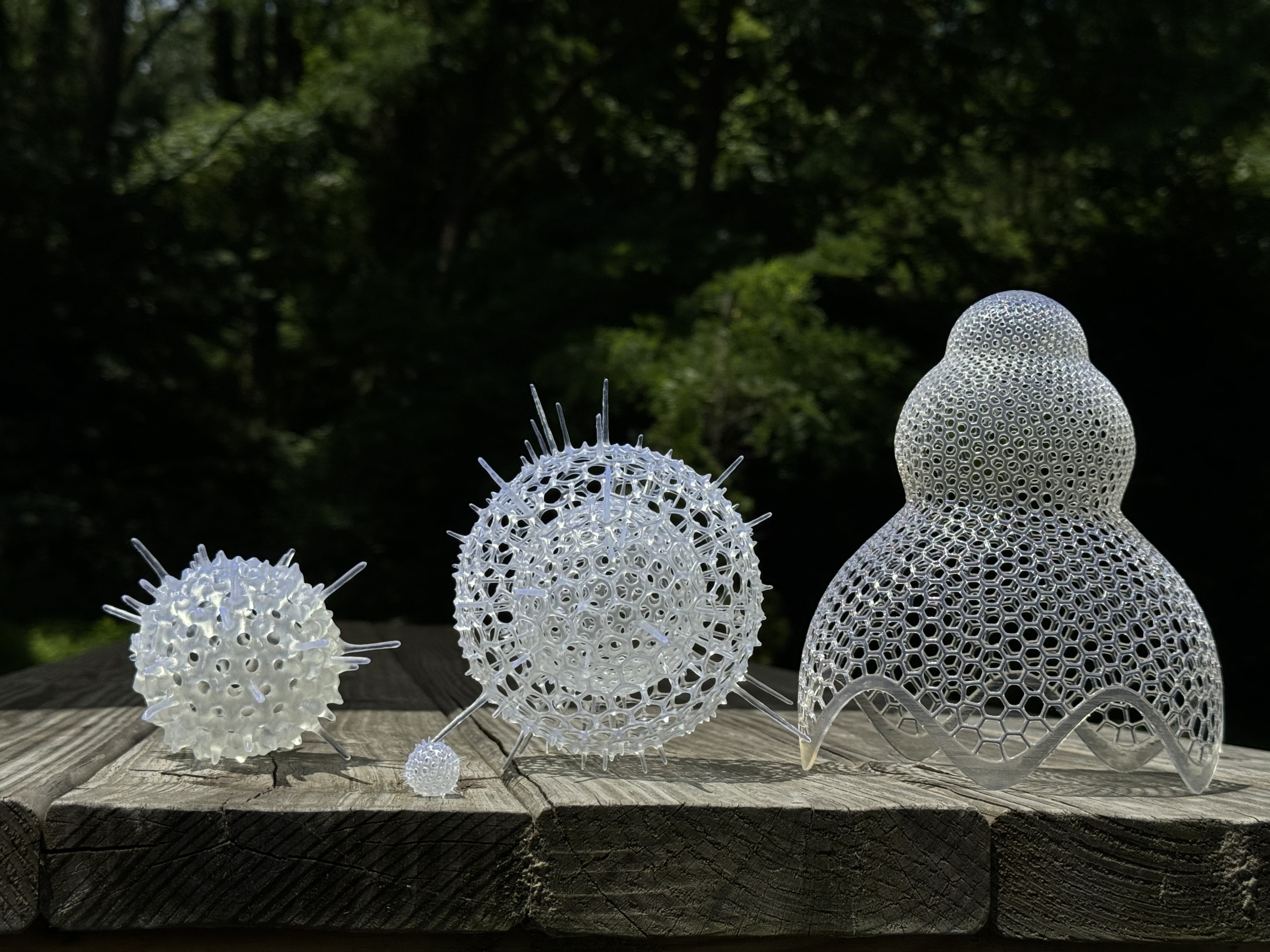
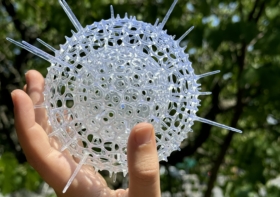
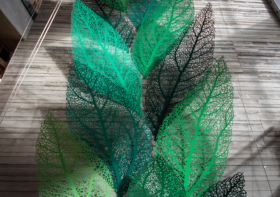
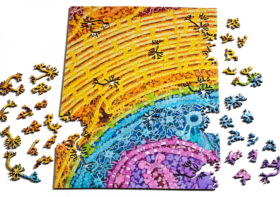
Leave a Reply